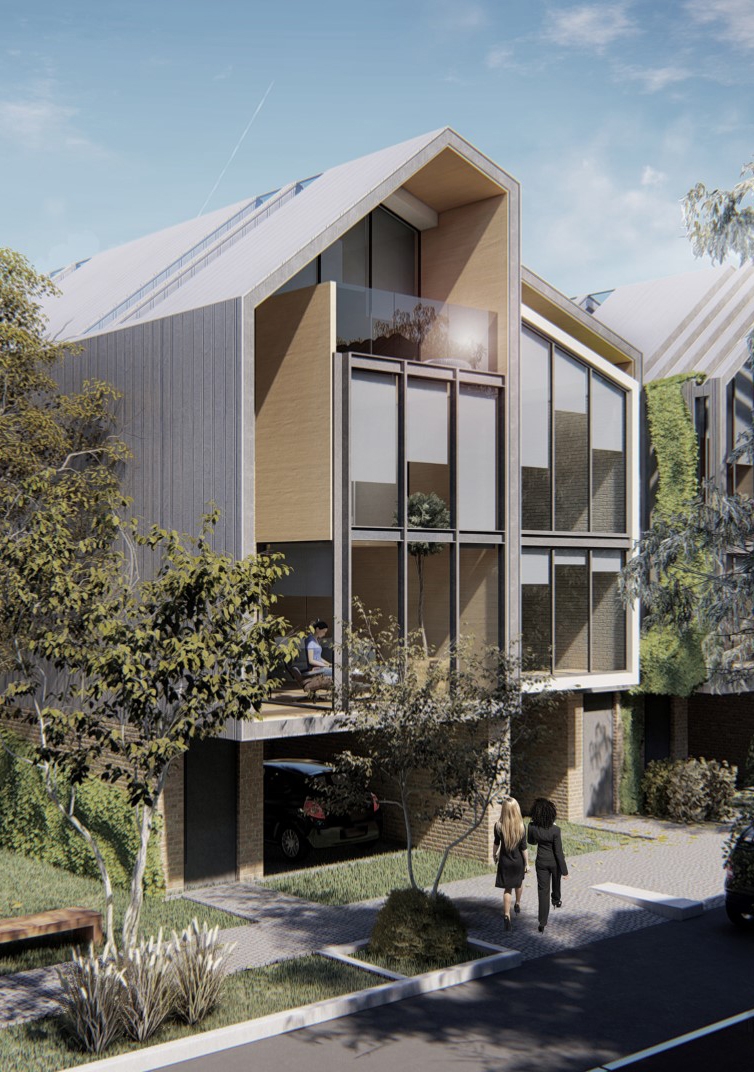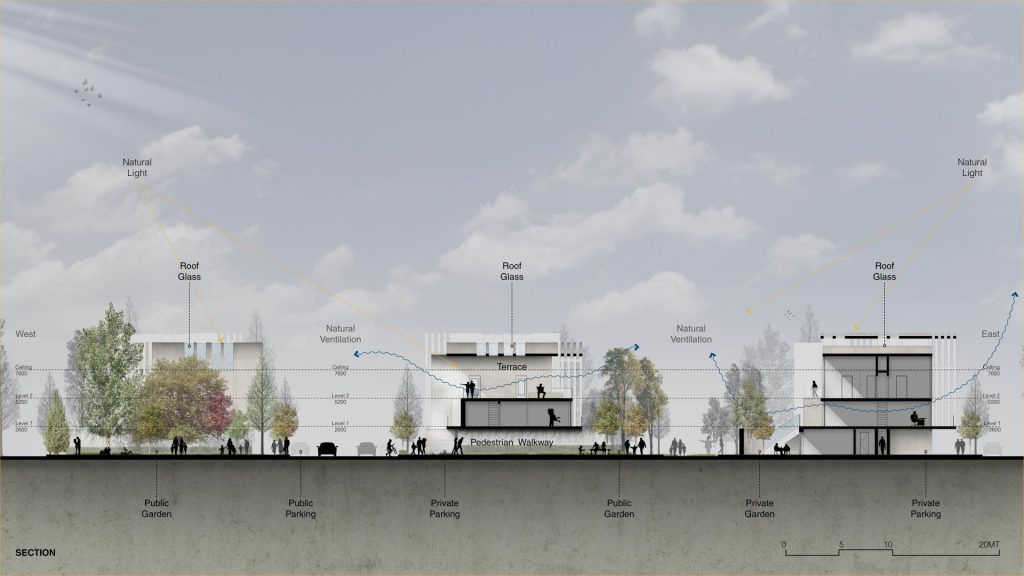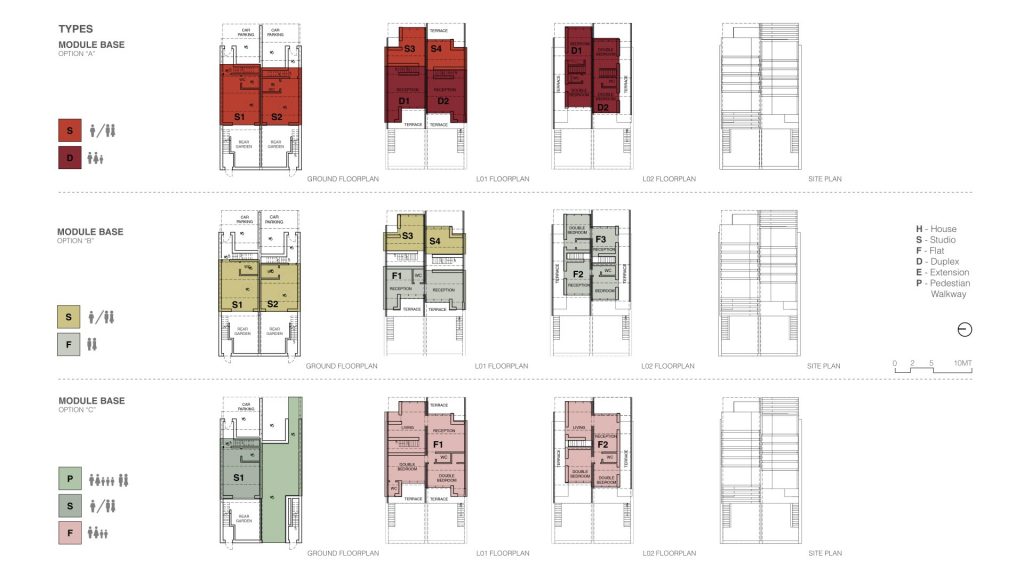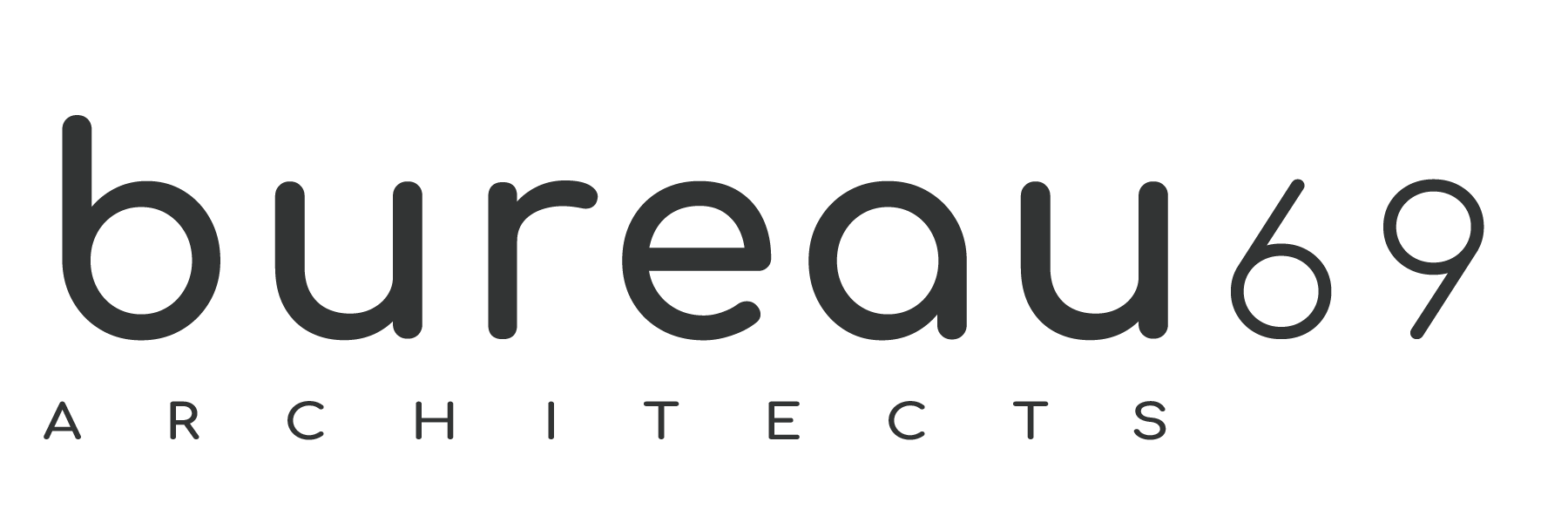Innovative terrace houses -Design competition
Design Max Strano (bureau69) + claudio Inserra
Place London (UK)
Award : Project shorlisted for the British Home Awards 2018 and published on the Sunday Time.
“Here is the terrace, deconstructed. Max Strano and Claudio Inserra, of Bureau69, a niche Italian architecture outfit that opened in London last year, paired two terraced homes to create a “double module” with a pitched roof. They then broke this down into three elements — base, house, and shell — and shifted them around to create the pronounced asymmetrical shape of the Shell.
The ground-floor base comprises covered parking and a flat that could house an elderly parent or nanny, or be used as an office. Stretching over two or three storeys above is the living space, with stairs down to the garden from the open-plan kitchen/living space on the first floor. Wrapped around it all is an aluminum shell — with gaps to let in sunlight — creating a partly shaded terrace next to the two second-floor bedrooms and shielding residents from being overlooked.
An air-to-water heat pump takes care of heating, cooling, and hot water; insulation includes cork and straw. Built mostly in a factory, with only the foundations, floor plate, roof and finishes constructed on-site”.
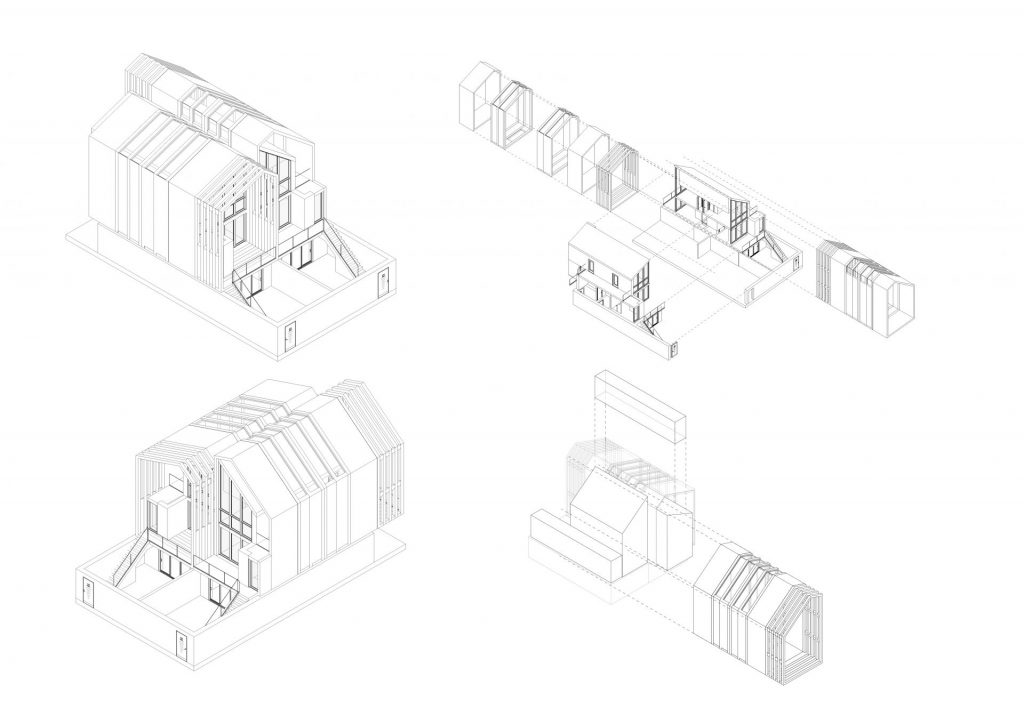
The proposal for this terrace house project is based on three elements that relate to each other and define the project:
a) A “base” that defines the imprinting of the traditional terrace house, conceived in traditional materials such as brick (but can also be adapted with a covering in more modern materials or stone). From street level, there is access to a “self-sufficient” multifunctional unit, either for disabled [total compliance with M4(2) BR] or elderly people (e.g. parents) or as a home working space. From this unit, you have exclusive access to the back garden. On the same level, a separate staircase provides access to the upper floors. On the first floor, the base is completed by a longitudinal element which is replicated for each plot, returning to the “rhythm” of the original module.
b) The “home” is conceived by adaptable materials according to local and environmental requirements. The house is designed on two levels with an open space on the first floor (living + kitchen) and an area with bedrooms on the second floor (two large double bedrooms, one with an en-suite bathroom).
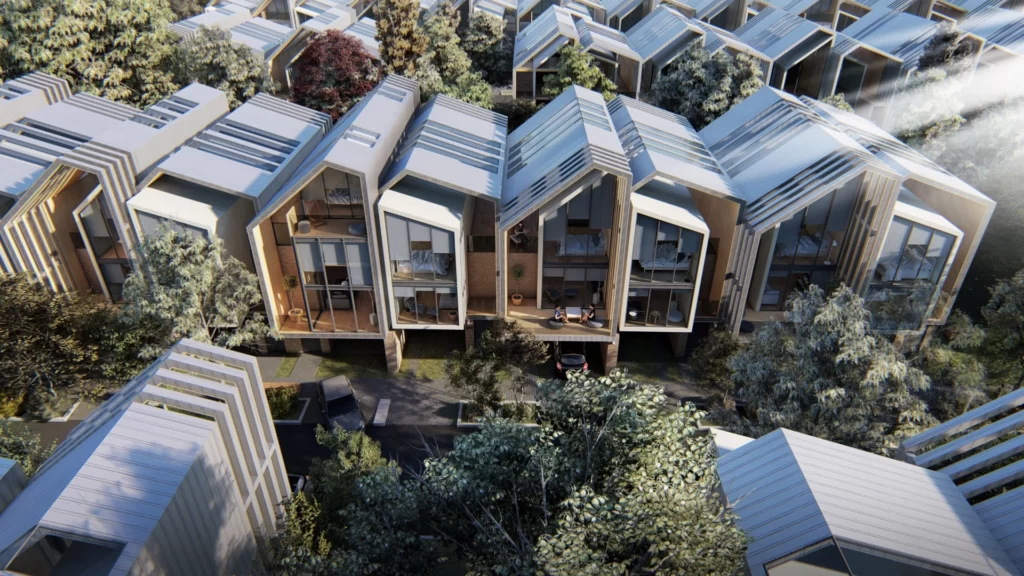
c) The “shell” that protects the house, characterising the project aesthetically, also denotes the limits of the possible extension. A 2500mm module with a self-supporting metal structure and total thermal insulation, houses all the technological systems. Structurally, the shell is supported by the “party walls” and is stabilised by a mutual connection between the single elements and the shells of adjacent units, creating a unique structure in its entirety. In addition, the shell is composed of three different elements: a solid element, an element with apertures on the roof (to allow the entry of sunlight), and an element with vertical “shielding” that defines the terrace and offers a wider field of view.
The privacy between the residential units is maintained throughout.
The project preserved the relationship between the building and the green space all around, with the purpose to maintain the environmental harmony typical of the terrace house developments. Taking account of all that the brief entailed, this proposal is based on a “module” of double the given plot size. This approach allows to generate vertical and horizontal connections on different levels. The module consists of two units, then two lots of 5 by 20 meters.
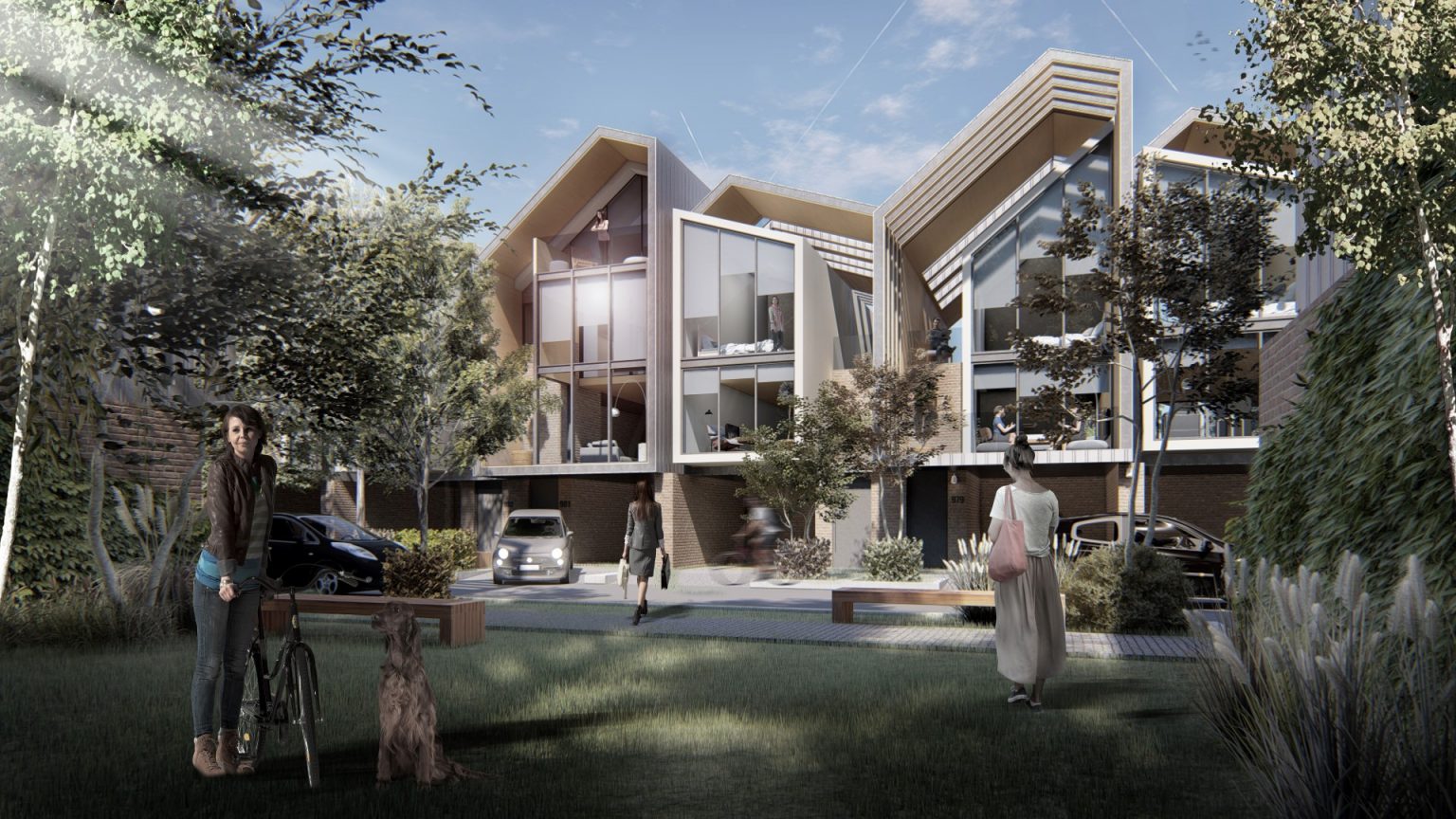
Each lot spans a dimension of 13 meters with 7 meters designated for a rear garden: a relationship derived from the traditional terrace house model with a subsequent rear extension. The use of a double module allows greater freedom of design and identification of various layouts adapted to various needs. The positioning of the transversal staircase permits greater freedom of internal distribution and greater flexibility in the division of units into flats, duplexes, studios, and/or houses with double-height spaces.
The objective of the project is not to alter the relationship between built volume and green space, but to maintain the environmental harmony typical of the terrace house developments. Taking account of all that the brief entailed, this proposal is based on a “module” of double the given plot size. This approach allows to generate vertical and horizontal connection on different levels.
The module consists of two units, then two lots of 5 by 20 metres. Each lot spans a dimension of 13 metres with 7 metres designated for a rear garden: a relationship derived from the traditional terrace house model with a subsequent rear extension.
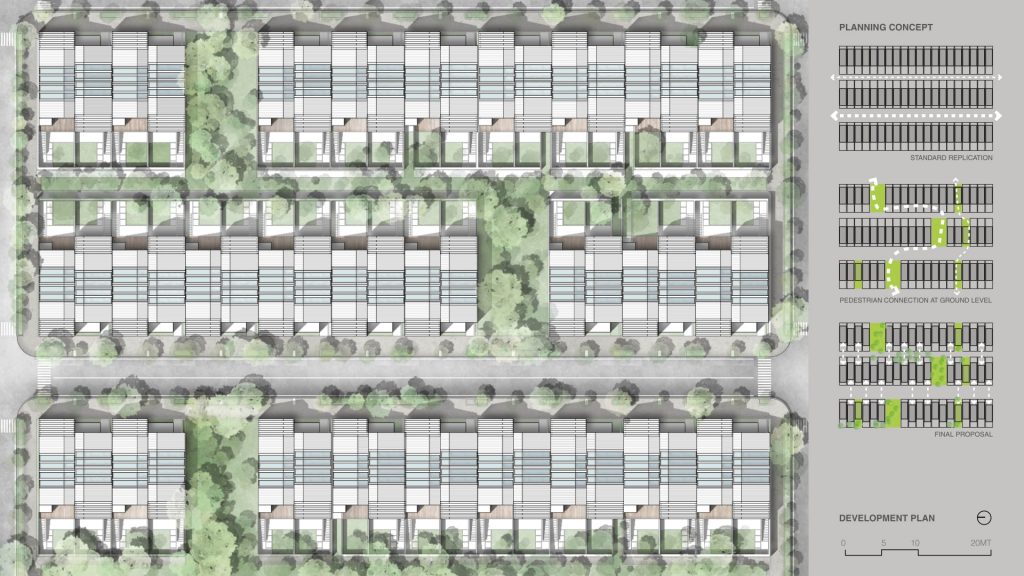
The use of a double module allows greater freedom of design and identification of various layouts adapted to various needs. The positioning of the transversal staircase permits greater freedom of internal distribution and greater flexibility in the division of units into flats, duplexes, studios and/or houses with double-height spaces.
